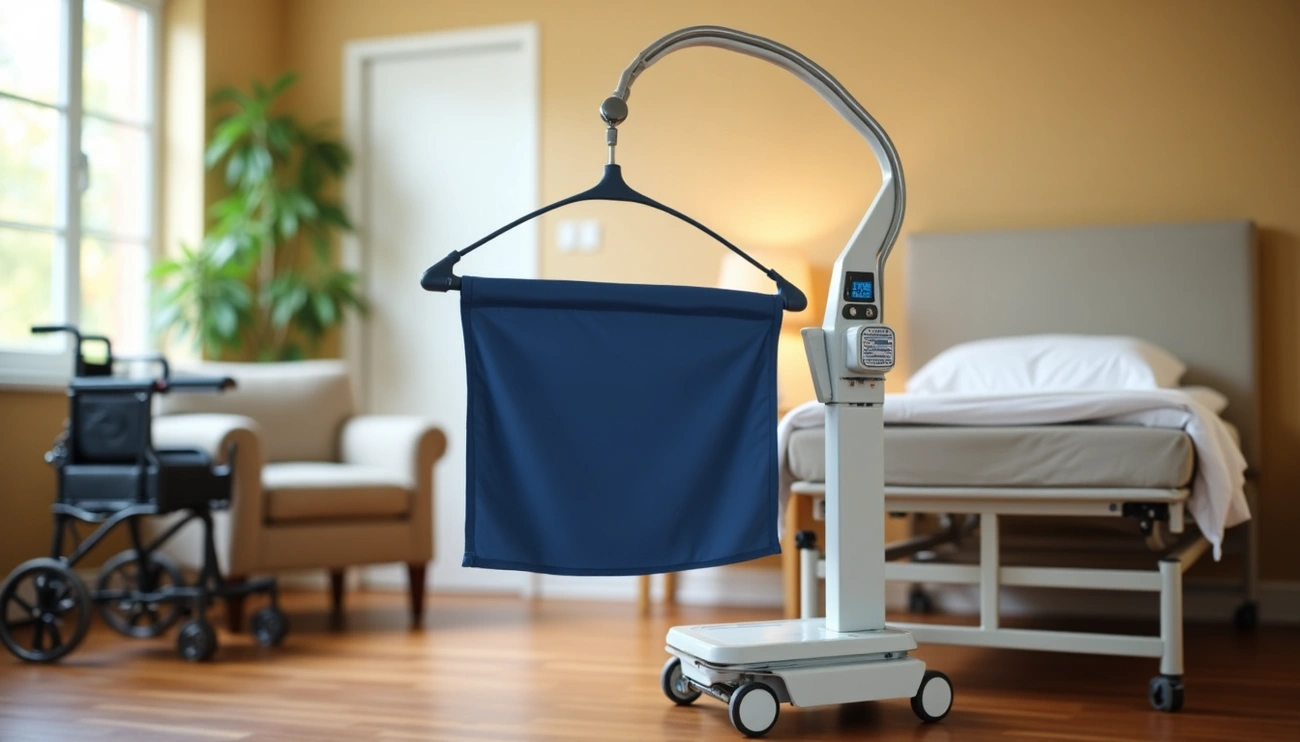Assisted living serves as a vital bridge for those finding the gap between independent living and nursing care increasingly challenging to navigate. It offers a tailored blend of support for daily activities, ensuring each resident maintains as much independence as possible, thereby enhancing their quality of life. Transitioning to assisted living is a significant step that combines the freedom of personal space with the reassurance of available care services, making it a preferred choice for many seniors and their families looking to balance assistance with autonomy.
As families consider when to move from independent to assisted living, they confront a myriad of factors, including assisted living costs, the importance of a living will, the need for an efficient care plan, and how to organize moving logistics with transportation services. Moving company services specializing in such transitions play a crucial role in easing the physical aspect of moving. Meanwhile, settling in goes beyond unpacking boxes; it’s about integrating into a community where care services are at the ready, tailored to each resident’s needs. This transition period emphasizes making informed decisions, from choosing the right assisted living community to understanding the best timing and preparing medical records.
Recognizing the Need for Assisted Living
Recognizing the need for transitioning to assisted living involves understanding the unique healthcare and lifestyle requirements that can no longer be adequately managed at home. This decision is often guided by several critical factors:
- Healthcare Needs:
- Memory Care Communities: For individuals with Alzheimer’s or other forms of dementia, offering specialized care and secure environments.
- Nursing Care Communities: Cater to those needing constant medical attention due to severe cognitive or mobility issues.
- Assisted Living Facilities: Ideal for those requiring assistance with daily activities and minor healthcare services but not 24-hour skilled nursing care.
- Financial Planning:
- Discuss openly with family members to gauge the financial landscape.
- Explore payment avenues such as private funding, long-term care insurance, Medicaid, Medicare, or VA benefits.
- Lifestyle Adjustments:
- Social and Emotional Factors: Seniors may experience a sense of loss regarding independence and privacy. Assisted living offers structured social interaction opportunities, aiding in combating loneliness and isolation.
- Safety Concerns: Recent falls, forgetting to take medicine, and increasing difficulty in managing daily tasks signal the need for a safer living environment.
- Caregiver Stress: Recognizing when the caregiving burden is overwhelming is crucial. Assisted living provides professional care, reducing stress on family caregivers.
Early research and preparation can significantly smoothen the transition, ensuring that decisions are not made in haste or under crisis. Utilizing resources like Eldercare Locator and AssistedLiving.org can provide valuable information to aid in this process.
Choosing the Right Assisted Living Community
Choosing the right assisted living community is a pivotal decision that influences an individual’s overall well-being. Here are key steps and considerations to ensure a smooth transition:
- Touring and Engagement:
- Begin with scheduling tours at potential communities, like Legacy Reserve at Fairview Park, focusing on environments that offer vibrant activities and amenities.
- Encourage participation in community events during visits to gauge the social atmosphere and compatibility.
- Conduct both scheduled and unscheduled visits, including during mealtimes and weekends, to observe the community’s day-to-day operations.
- Documentation and Services:
- Confirm all pre-move paperwork and request copies of the room and community floor plans.
- Inquire about the list of provided items and additional services, understanding what is included in the base rate versus what incurs extra costs.
- Verify licensing, review survey reports, and discuss specific care needs, ensuring the community can cater to individual preferences and routines.
- Financial Planning:
- Discuss budget constraints and explore if the community participates in Medicaid or offers financial assistance for those whose funds may deplete.
- The median monthly rent for assisted living units, currently at $4,300, is expected to rise, making early financial planning essential.
- Consider temporary respite care stays for a trial experience before making a long-term commitment.
This approach ensures a comprehensive evaluation of potential communities, focusing on personal needs, financial considerations, and the quality of life offered.
Preparing for the Move
Transitioning to assisted living involves meticulous planning and organization to ensure a smooth process. Here are key steps to prepare for the move:
- Documentation and Assessment:
- Complete a comprehensive assessment form with the assisted living community to determine the required level of support.
- Gather essential documents including medical records, living will, care plan, and financial paperwork.
- Downsizing and Packing:
- Start by downsizing belongings, focusing on essentials and sentimental items to make the new space feel like home.
- Use a systematic approach for packing:
- Essentials: Toiletries, medications, clothing, bedding, and furniture.
- Keepsakes: Select photos and items that hold significant emotional value.
- Practical Items: Seasonal clothing, hobby supplies, books, and housewares.
- Logistics and Moving:
- Coordinate with a reputable moving company, ensuring they are licensed and insured. Get cost estimates and confirm availability for the move-in date.
- Manage logistical aspects such as canceling current utilities, setting up new ones, forwarding mail, and updating important contacts with the new address.
- Plan for the physical move day by organizing transportation for your loved one, ensuring all necessary items are packed and ready, and coordinating with the assisted living community for a smooth arrival and setup.
The Emotional Journey for Seniors and Their Families
Transitioning to assisted living is a multifaceted journey that encompasses not only the physical but also the emotional landscape for seniors and their families. Understanding and navigating this emotional terrain is crucial for a smooth transition. Here are key strategies and considerations:
- Emotional Preparedness and Support:
- Acknowledging Emotions: Recognize and validate feelings of fear, anxiety, relief, and anticipation. Understanding that these emotions are normal can help in managing them more effectively.
- Seeking Support: Engage with support groups or online forums to share experiences and gain insights from others who have navigated similar paths.
- Staying Connected: Regular interactions through visits, calls, or video chats can alleviate feelings of isolation and support emotional well-being.
- Adjustment Strategies:
- Positive Engagement: Encourage participation in community activities and establish a routine that includes self-care practices to foster a positive mindset.
- Personalizing Space: Bringing personal items and arranging visits to familiarize the senior with the new environment can ease the transition.
- Open Communication: Discuss expectations, fears, and the benefits of assisted living openly to align understanding and support emotional adjustment.
- Managing the Transition:
- Balancing Contact: Find the right balance in visits and communication, particularly during the first 30 days, to support independence while ensuring the senior does not feel neglected.
- Embracing New Opportunities: Focus on the positive aspects such as the availability of professional care, the potential for new friendships, and the opportunity to engage in enjoyable activities.
- Patience and Understanding: Recognize that the adjustment period can vary greatly among individuals. Being patient and offering a supportive presence can significantly ease the emotional journey.
By addressing these emotional aspects with empathy and support, families can help their loved ones embrace this new chapter with confidence and positivity.
Setting Up the New Living Space
To ensure a seamless transition to assisted living, creating a living space that feels both familiar and safe is paramount. Here are practical steps to achieve this:
- Familiarity and Comfort:
- Arrange furniture and decorations in a manner reminiscent of the previous home to evoke a sense of familiarity.
- Display sentimental items prominently to personalize the space and make it feel more like home.
- Incorporate a mini-fridge and microwave for convenience, allowing for meal variety and independence.
- Label all clothing items with the resident’s name to prevent loss and ensure personal belongings are easily identifiable.
- Safety and Accessibility:
- Install non-slip bath or shower mats and handrails in the bathroom to prevent falls.
- Ensure walkways are clear of electrical cords and clutter to maintain a safe environment.
- Opt for higher toilets, grab bars, and non-slip surfaces in bathrooms, catering to the specific needs of seniors.
- Layout and Decor:
- Obtain a copy of the room layout and familiarize yourself with community rules regarding furniture size and pet policies.
- Measure the new space to create a list of essential furniture items, choosing pieces that fit well within the community’s layout.
- Collaborate on downsizing efforts, focusing on must-have items that fit comfortably in the new living space, and consider the visual impact of flooring, avoiding bold, contrasting patterns that may disrupt depth perception.
Becoming Part of the Assisted Living Community
Integrating into a new community, especially an assisted living environment, requires a multifaceted approach to ensure a smooth and comfortable transition for seniors. Here are practical steps and considerations:
- Building Connections:
- Residents and Staff: Encourage interactions with neighbors and staff to build a supportive network. Regular dining with other residents and participating in community events can foster friendships and a sense of belonging.
- Outside Community: Maintaining ties with friends, family, and activities outside the facility is crucial for emotional well-being. Encourage regular visits and involvement in external hobbies or interests.
- Care and Support: Get acquainted with caregivers and staff, understanding the roles they play in daily life. Participate in care plan discussions and stay informed about medical appointments and medication schedules.
- Engagement and Independence:
- Activities and Clubs: Join clubs or groups that align with personal interests. This not only aids in socializing but also keeps the mind active.
- Fitness and Therapy: Engage in available fitness programs or therapy sessions to enhance physical well-being and independence.
- Family Involvement: Family members should actively participate in care plans and therapy, offering companionship and moral support, and ensuring the senior’s preferences for living conditions are met.
- Adjustment Period:
- Patience and Understanding: Recognize that adapting to a new environment takes time. Seniors may need 3 to 6 months to fully adjust.
- Maintain Traditions: Continuing family traditions within the new living space can provide comfort and a sense of normalcy.
- Open Communication: Honest conversations about concerns and expectations can help address any issues and promote a smoother transition.
By focusing on these areas, seniors can effectively become part of their new assisted living community, creating a fulfilling and enjoyable chapter in their lives.
Conclusion
Transitioning to assisted living, while a significant life event, can be navigated smoothly with careful planning, open communication, and emotional support. Throughout this article, we’ve explored the importance of recognizing the need for assisted living, selecting the right community, efficiently preparing for the move, and managing the emotional journey effectively. These steps, underscored by the importance of creating a comforting and safe new living space and integrating into the assisted living community, are essential in ensuring the transition enhances the quality of life for seniors and their families.
The process of moving to assisted living holds the potential for positive change, offering seniors a blend of independence and support tailored to their needs. By approaching this transition with a thoughtful and informed strategy, families can help their loved ones adjust to and thrive in their new environment. The journey, though challenging, is an opportunity for growth, fostering new relationships, and ensuring a safe, engaged, and fulfilled life in the assisted living community.
FAQs
How can the transition to assisted living be made smoother?
To ensure a smoother transition to assisted living, consider these five strategies:
- Offer a trial stay to familiarize them with the environment.
- Begin downsizing belongings early to reduce stress.
- Decorate their new living space with familiar items to make it feel like home.
- Encourage participation in community activities to foster a sense of belonging.
- Maintain regular communication to show your support. Remember, patience and positivity are key throughout this process.
What is the typical adjustment period for seniors moving to assisted living?
The adjustment period for seniors transitioning to assisted living varies significantly from person to person. Some may start to feel at home within a week, while others might need three to six months or longer, especially if they find the change particularly challenging. This wide range of adjustment times is completely normal.
How can you persuade a senior to consider moving to assisted living?
When discussing the move to assisted living with a senior, consider these approaches:
- Empower them by involving them in the decision-making process, avoiding language that suggests they have no choice.
- Communicate your concerns and love, steering clear of expressing frustration or fear.
- Highlight the advantages of assisted living, such as increased independence and opportunities for social engagement.
What should you say to someone about to move into assisted living?
When talking to someone who is moving into assisted living, it’s important to:
- Show your support and care by reassuring them of your presence and concern for their happiness.
- Acknowledge and validate any mixed feelings or worries they may have about this new chapter in their life.












